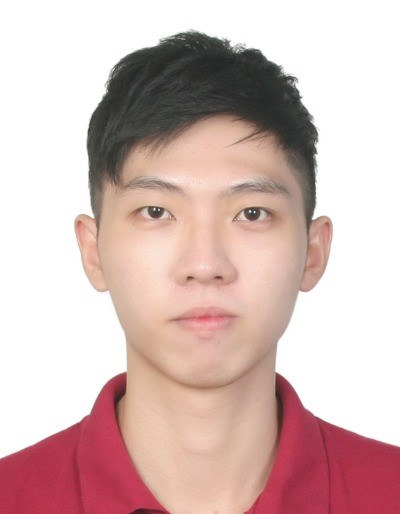Seminar
A Domain Decomposition Technique for Small Amplitude Acoustic Wave Interactions and Scattering |
| 7 October 2022, Friday, 10:00 - 10:30am | Speaker: Mr. Lim Wei Xian, Ph.D. Candidature of NTU, MAE |
| Venue: Seminar Room 8D-1, Level 8, Temasek Laboratories | Event Organiser Host: Dr. Chin Yao Wei |
ABSTRACT |
In this work, a 2D domain decomposition technique (DDT) is developed based on an overset method coupling a nonlinear domain with a linearized Euler solver. The nonlinear domain accounts for complex physics in the near field, such as formation of shock waves, and the linear solver propagates small perturbation waves to the far-field for subsonic to supersonic regimes. Acoustic wave interactions and scattering for internal and external flows are considered in this work. Simulation results suggest that an overlap ratio between linear and nonlinear regions of 2 <= R <= 10 is encouraged to propagate the acoustic waves with less dissipation and dispersion errors. Moreover, substantial cost-savings of more than 50% were observed when DDT was used. The implementation of DDT in the external flow case was able to eliminate the numerical noise observed at the far-field of a corresponding fully nonlinear simulation, allowing proper wave scattering, interference, and Doppler effect to be observed.
|
| ABOUT THE SPEAKER |
 The speaker received his Bachelor of Engineering (Aerospace Engineering) from Nanyang Technological University (NTU) in 2018. He is currently pursuing his Doctor of Philosophy (PhD) in NTU under the guidance of Asst. Prof Chan Wai Lee. His current research works focus on the numerical method of acoustic generation and interaction, thermoacoustic coupling, and aerodynamics. Besides, the speaker has four years of OpenFOAM experience, and currently involves in developing physics-based AI project. |

Laser-based Diagnostics for Electric Field and Species Concentration Measurements for Gas Discharges and Combustion Applications |
| 7 October 2022, Friday, 10:30 - 11:00am | Speaker: Dr. Chng Tat Loon, Department of Mechanical Engineering, NUS |
| Venue: Seminar Room 8D-1, Level 8, Temasek Laboratories | Event Organiser Host: Dr. Chin Yao Wei |
ABSTRACT |
Laser-based measurement methods have found widespread applicability due to their excellent resolution in both time and space, as well as their ability to remain non-intrusive. More recently, the development of coherent methods has gained traction given their potential for enhanced detection sensitivity and range. In this talk, I will present work on two such methods for the measurement of electric field strengths and chemical species concentrations, two quantities of decisive importance in plasmas, combustion, as well as plasma-assisted combustion. Electric field induced second harmonic generation, or E-FISH, is a nonlinear optical phenomenon which has traditionally been utilized for quantifying nonlinear susceptibilities and characterizing optical field distributions of laser beams. More recently, it has been repurposed as a versatile and sensitive tool for probing electric fields in plasmas. Electric field measurements in the ionization wave phase of several discharges will be discussed, along with some recent developments to extend the applicability of E-FISH, and strategies to address existing limitations. Radar resonance enhanced multi-photon ionization (REMPI) is a hybrid method which combines the high detection selectivity of laser-based REMPI spectroscopy with the high sensitivity of microwave (radar) scattering for trace species detection. In practice, sub-ppm levels of concentration have been demonstrated under atmospheric conditions. Application examples at both ambient conditions and in a flame will be presented. |
| ABOUT THE SPEAKER |
|



 Dr Chng Tat Loon is an assistant professor in the Mechanical Engineering department of CDE. Prior to joining NUS, he was a postdoctoral associate at the Laboratory of Plasma Physics in Ecole Polytechnique, France. He received both his B.Eng and M.Eng degrees from the Department of Mechanical Engineering at the National University of Singapore (NUS), before obtaining his Ph.D from the Department of Mechanical and Aerospace Engineering at Princeton University, USA. Before pursuing his Ph.D, Dr. Chng worked for several years as an associate research scientist at Temasek Laboratories, NUS, on a range of fluid mechanics problems, with the goal of transitioning these technologies to the defense industry. His research interests include non-equilibrium plasma technologies, development of advanced laser-based diagnostics for non-intrusive, standoff detection, and flow control aerodynamics, with specific application areas in aerospace and sustainable energy.
Dr Chng Tat Loon is an assistant professor in the Mechanical Engineering department of CDE. Prior to joining NUS, he was a postdoctoral associate at the Laboratory of Plasma Physics in Ecole Polytechnique, France. He received both his B.Eng and M.Eng degrees from the Department of Mechanical Engineering at the National University of Singapore (NUS), before obtaining his Ph.D from the Department of Mechanical and Aerospace Engineering at Princeton University, USA. Before pursuing his Ph.D, Dr. Chng worked for several years as an associate research scientist at Temasek Laboratories, NUS, on a range of fluid mechanics problems, with the goal of transitioning these technologies to the defense industry. His research interests include non-equilibrium plasma technologies, development of advanced laser-based diagnostics for non-intrusive, standoff detection, and flow control aerodynamics, with specific application areas in aerospace and sustainable energy.